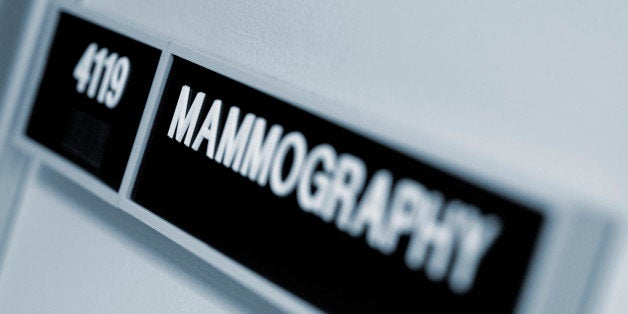
One of the most frustrating parts of being a doctor is the all-too-frequent disconnect between scientific advancement and popular wisdom. While we live in a society that seems to thrive on more, faster, better information, what I see and experience every day are patients paralyzed by the volume of information they are receiving.
Nowhere have I seen this paralysis more clearly than in the raging debate over the value of mammograms. As a clinical breast radiologist, I see first hand, day in and day out, the benefits of finding cancer early with mammography. I know that I have saved women's lives by spotting early danger signs. And although there is anxiety and discomfort associated with screening for breast cancer, the many women with whom I interact every day are incredibly strong and deserve the best care we can offer them.
As the debate has reached a crescendo over the last year or so, what has been missing from the discussion is recognition that medical technology -- just like the people it serves -- is dynamic. What makes sense one day might not make sense the next. What worked well in 2000 might work even better in 2014.
A new study came out earlier this year in the Journal of the American Medical Association (JAMA) that promises to alleviate some of the confusion about the value of mammograms. I, with the assistance of 13 other colleagues, conducted the study to determine if the latest advance in mammography -- the 3D mammogram -- addressed any of the shortcomings associated with traditional 2D mammography.
This research is the largest, most comprehensive study on 3D mammography to date. We reviewed the mammograms of close to a half a million women in different settings (community-based centers, hospitals and academic institutions) and found that 3D mammography significantly increases the detection of invasive cancers. Those are the cancers that are truly worrisome, the ones we want to find.
Importantly, our peer-reviewed research found that when a woman is screened using a 3D mammogram, she is less likely to be called back for false alarms. That means more accuracy. It also means less anxiety.
3D mammograms work differently from traditional 2D mammograms, but women won't notice the difference during the exam. With 3D, a mammogram is like a book, and you can page through very thin sections of tissue to see what's there. You don't have to look at the full breast compressed into one image as is done with 2D mammograms. This leads to a more accurate representation of the breast tissue.
This new study addresses the two most frequently cited concerns with mammography, namely that we are finding cancers that don't need to be treated and that too many women are being called back for unnecessary additional tests.
I recognize that one study will not change the discussion overnight. However, we finally have a tool that simultaneously improves upon the two main criticisms of standard mammography.
As Breast Cancer Awareness Month focuses attention on this horrifying disease, I am hopeful that patients, physicians and insurance companies take this new information seriously. As mammography changes and evolves, so must our understanding of the technology. We must all make sure we don't prematurely dismiss a method of imaging that can literally mean the difference between life and death for millions of women.
Sarah Friedewald is on Hologic's scientific advisory board and is a paid consultant for the company.